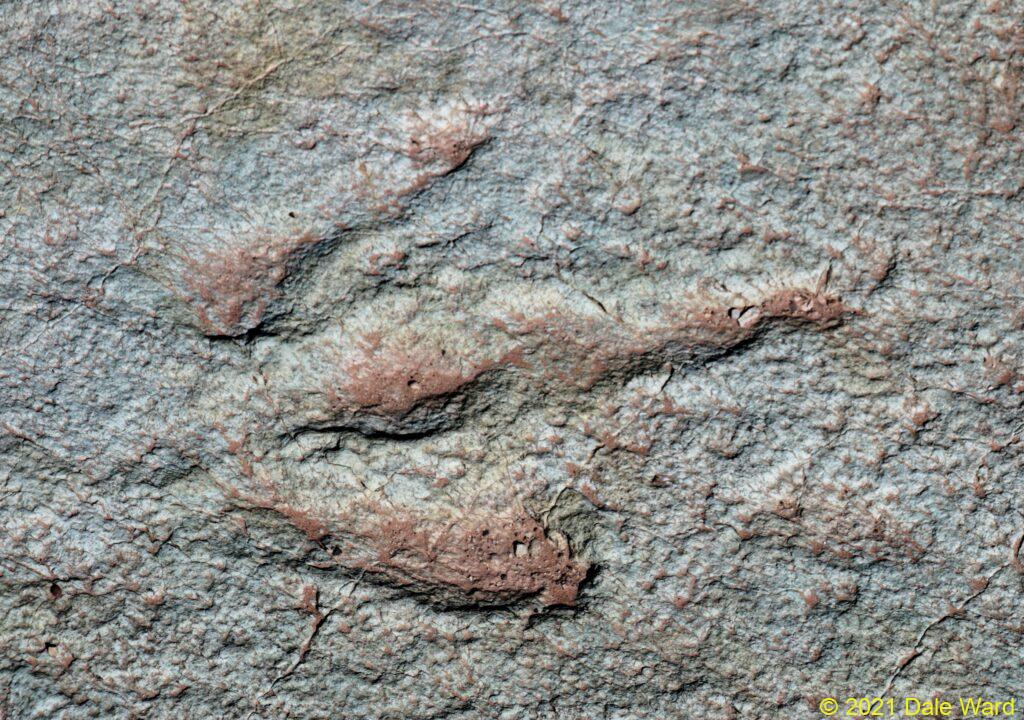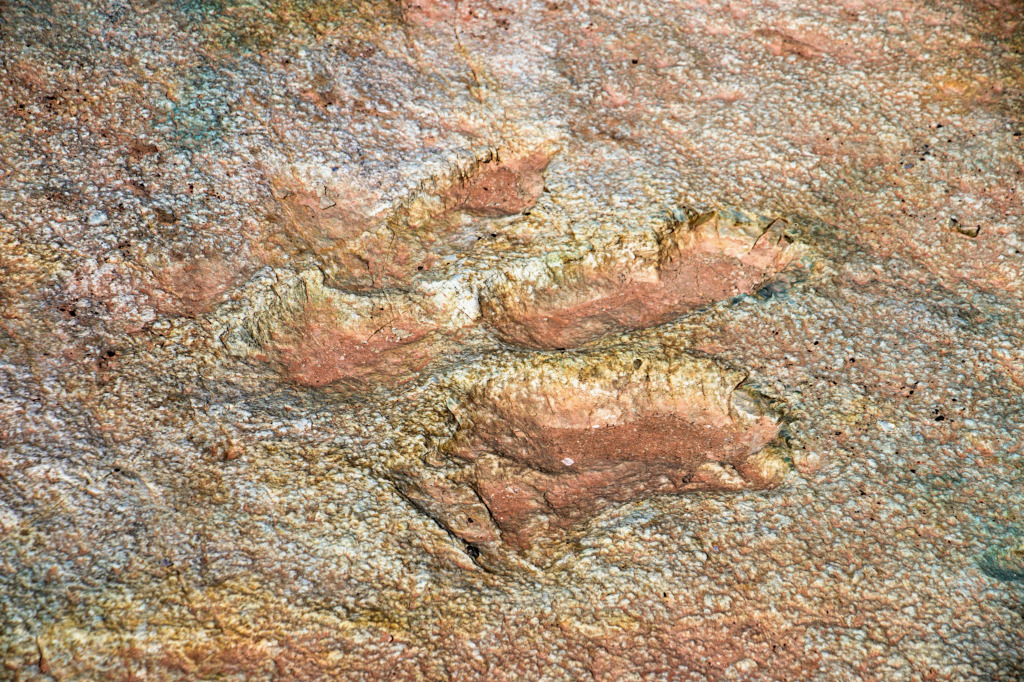Mill Canyon Dinosaur Tracksite, Utah
Visiting the Mill Canyon Dinosaur Tracksite
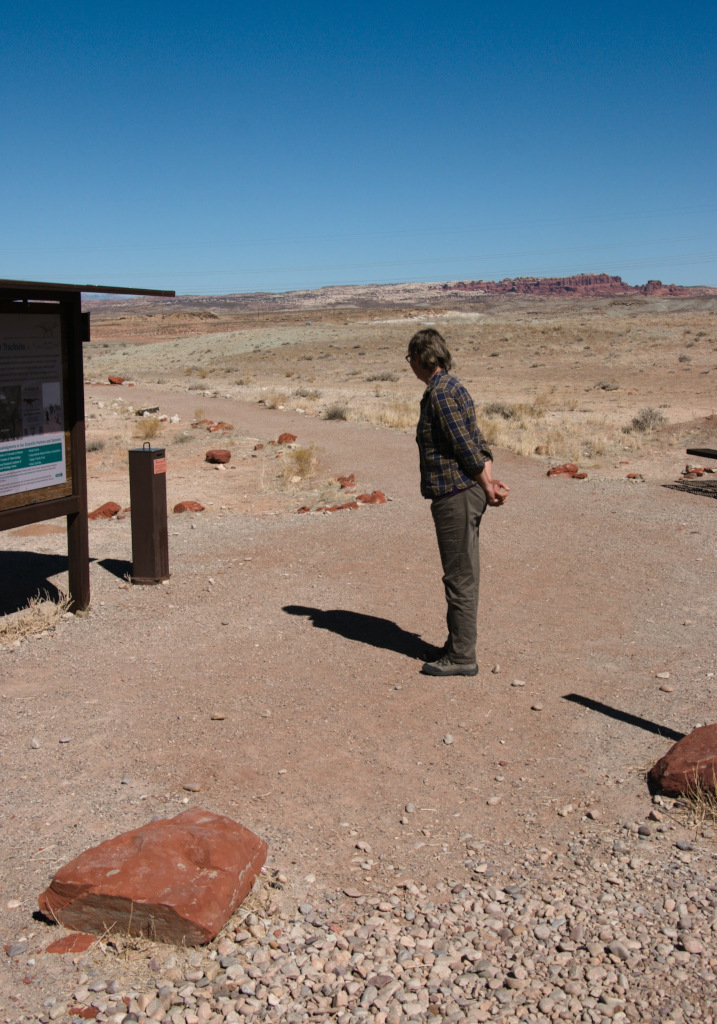 Sign at the start of the trail to the Tracksite. You can see that the site does not look _at_ _all_ like the wet lakeshore that it was 112 million years ago, when the dinosaur tracks were made.
Sign at the start of the trail to the Tracksite. You can see that the site does not look _at_ _all_ like the wet lakeshore that it was 112 million years ago, when the dinosaur tracks were made.
We recently took a trip out to the Mill Canyon Dinosaur Tracksite. It’s about 15 miles north of Moab, Utah. I have great fondness for visiting Dinosaur tracksites. I get a feeling of immediacy from viewing tracks that I don’t get from seeing fossilized skeletons. There’s a sense of movement, of life, in the tracks.
The tracksite is from the early Cretaceous period - about 112 million years ago. There are a lot of tracks here - the BLM estimates about 200 individual tracks.
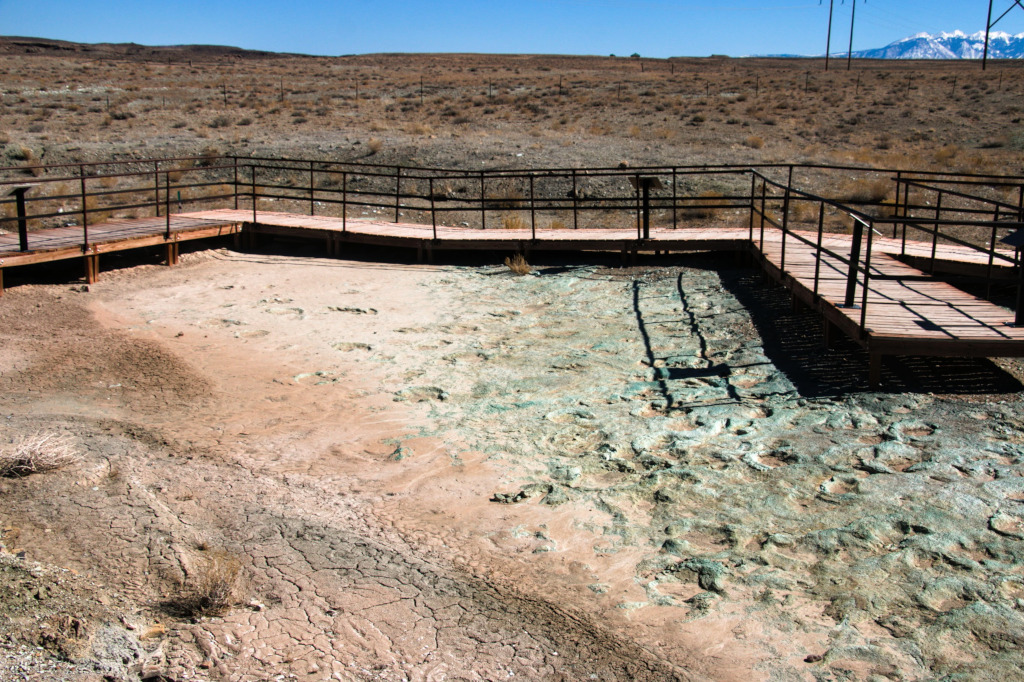 Boardwalk surrounding the Tracksite. That greenish stone below the Boardwalk contains the tracks - you can see how many of them there are in this photo. The BLM did a marvelous job with this site.
Boardwalk surrounding the Tracksite. That greenish stone below the Boardwalk contains the tracks - you can see how many of them there are in this photo. The BLM did a marvelous job with this site.
The site was discovered in 2009. Since then, researchers and the BLM have excavated it a little more, and built a boardwalk for visitors. The boardwalk is nicely done - it’s not very intrusive.
And the tracks are cool.
One of the first tracks you see is a crocodile slide, a spot where a Crocodile that was resting on its belly pushed itself through the mud.
The track looks very, very similar to the Saltwater Crocodile slides we saw on the beaches of Belize fifteen or twenty years ago. The shock of this familiarity, this recognition, was nice.
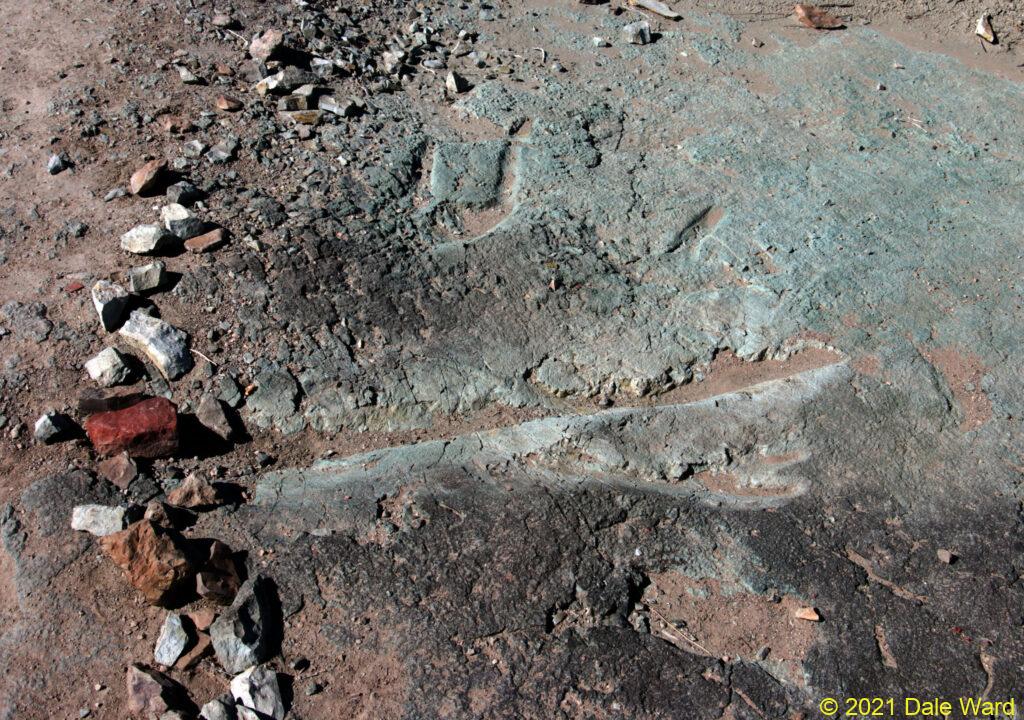 Crocodile slide. When we visited Belize 10 or so years ago, there were Saltwater Crocodiles that would haul out onto the beaches at night. We’d see drag marks very similar to this one the beaches in the morning.
Crocodile slide. When we visited Belize 10 or so years ago, there were Saltwater Crocodiles that would haul out onto the beaches at night. We’d see drag marks very similar to this one the beaches in the morning.
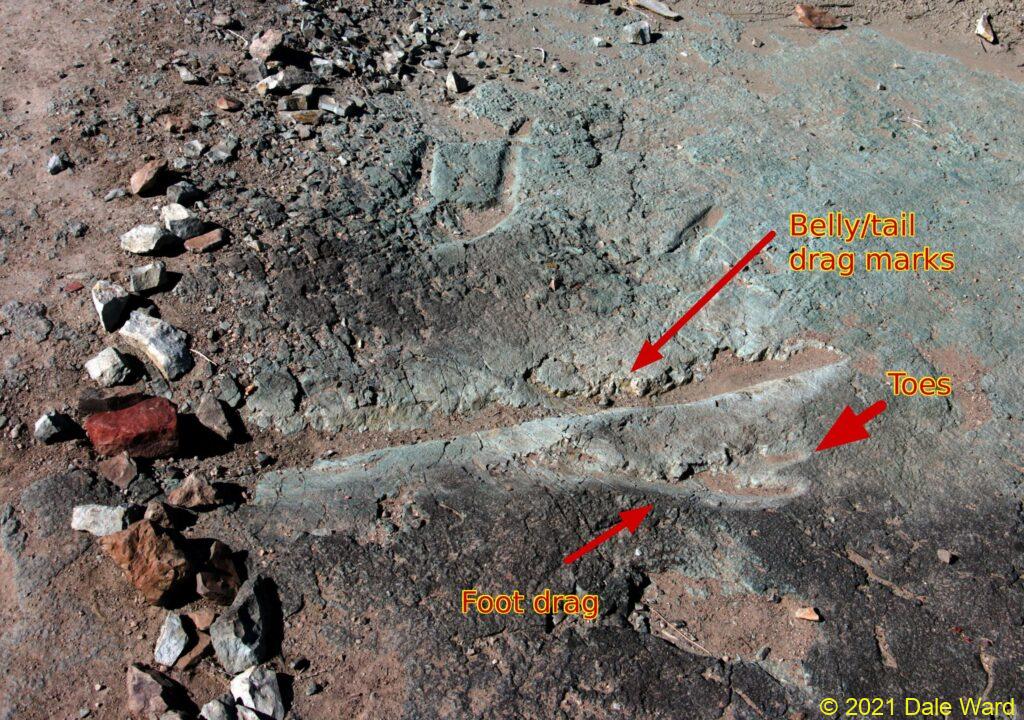 Crocodile slide with labels. Note that some of the other marks in the stone, such as the series of parallel lines above the belly/tail slide, are probably also tracks.
Crocodile slide with labels. Note that some of the other marks in the stone, such as the series of parallel lines above the belly/tail slide, are probably also tracks.
The Crocodile slide is off by itself a little bit, before you enter the boardwalk. Once you’re on the boardwalk, you’re walking around an algae-covered mudflat that has been churned up by passing Dinosaurs. You can see the texture of the algae, the little deformations in the mud surrounding the tracks from the Dinosaurs’ weight, as if it just happened.
The Dinosaur tracks are right there, looking like they were freshly made.
And the whole scene has been turned to stone, as if a magical spell has been cast on it.
Seeing these tracks is an astonishing experience. You can follow the progress of individual Dinosaurs, see how the mud squelched up under their weight, see where the Dinosaurs turned slightly to look over the shoulders.
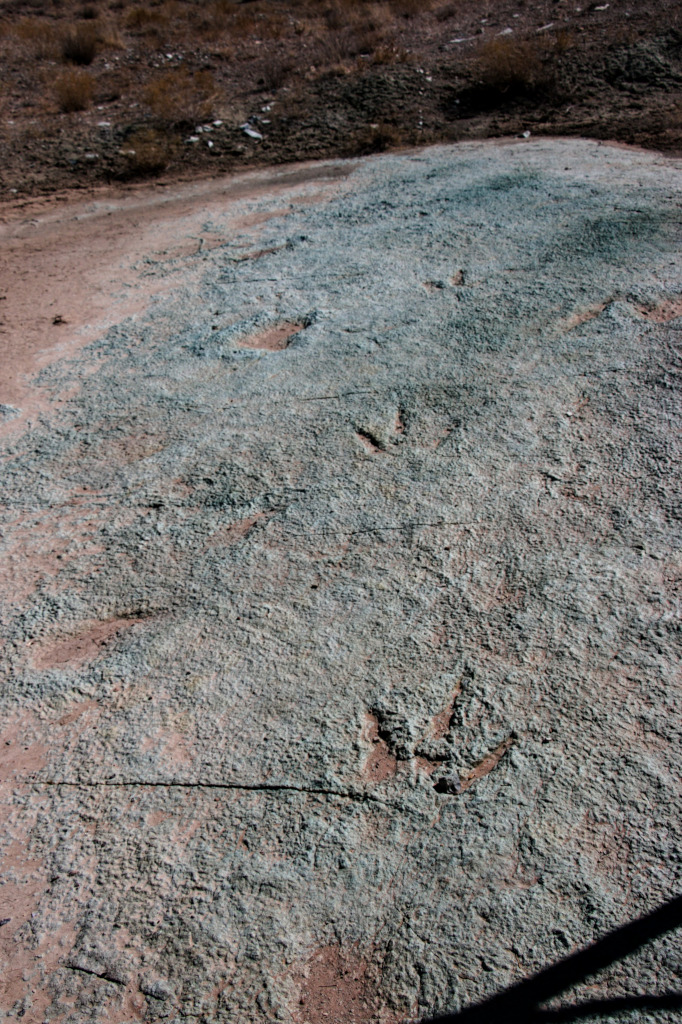 Series of _Dromaeosauripus_ tracks
Series of _Dromaeosauripus_ tracks
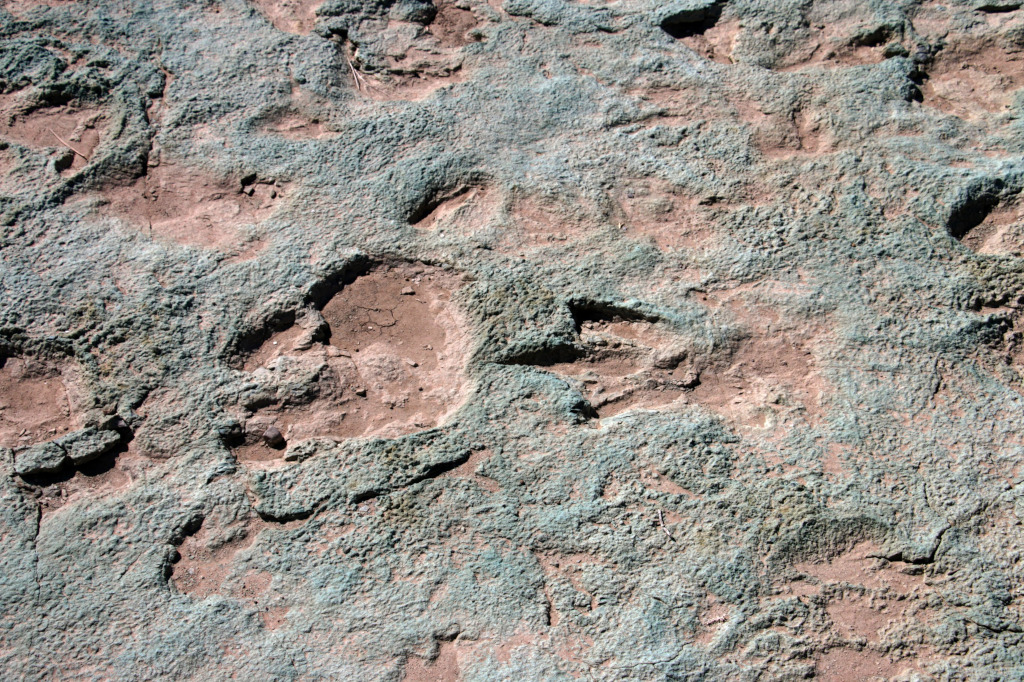 _Brontopodus_ tracks - the round ones that look like potholes.
_Brontopodus_ tracks - the round ones that look like potholes.
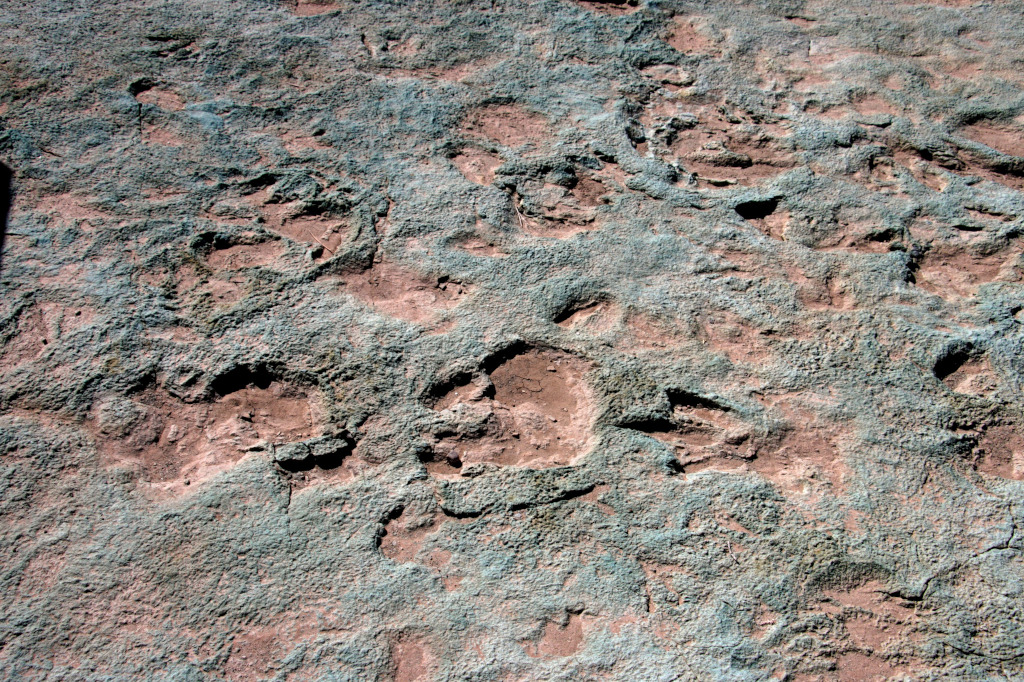 Wider angle view of the previous photo. This shot gives you a feeling of the density of tracks at this site.
Wider angle view of the previous photo. This shot gives you a feeling of the density of tracks at this site.
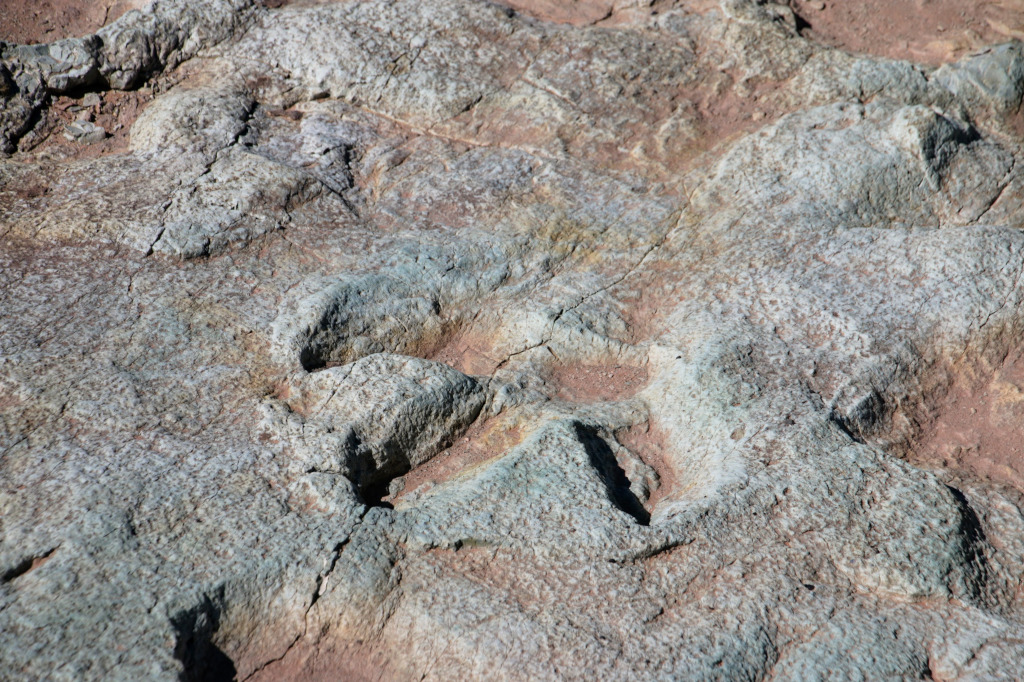 Large Theropod tracks. The researchers estimate that the creature who left these tracks was 8 feet tall - _at the hip._
Large Theropod tracks. The researchers estimate that the creature who left these tracks was 8 feet tall - _at the hip._
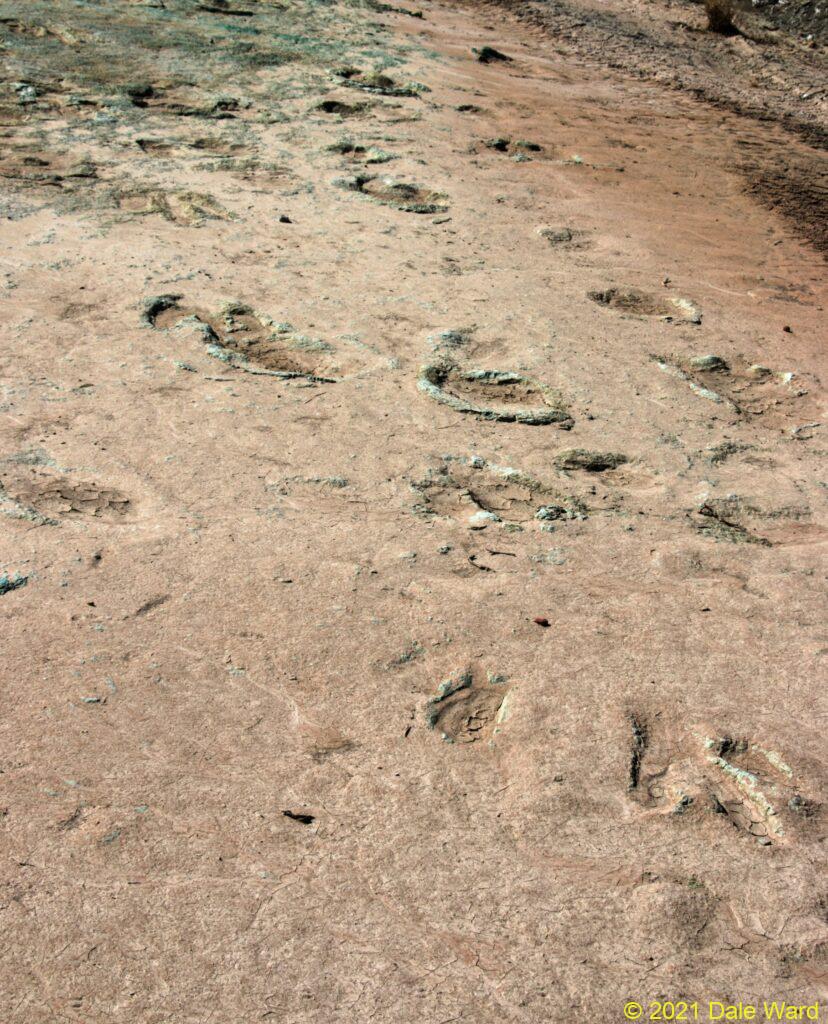 Sauropod tracks with large Theropod track. I like this photo because how fresh the tracks look. The raised edges of the the tracks, the crispness of them, makes it look like they are new tracks in mud, ones that were made recently, rather than being impressions in millions-of-year-old stone.
Sauropod tracks with large Theropod track. I like this photo because how fresh the tracks look. The raised edges of the the tracks, the crispness of them, makes it look like they are new tracks in mud, ones that were made recently, rather than being impressions in millions-of-year-old stone.
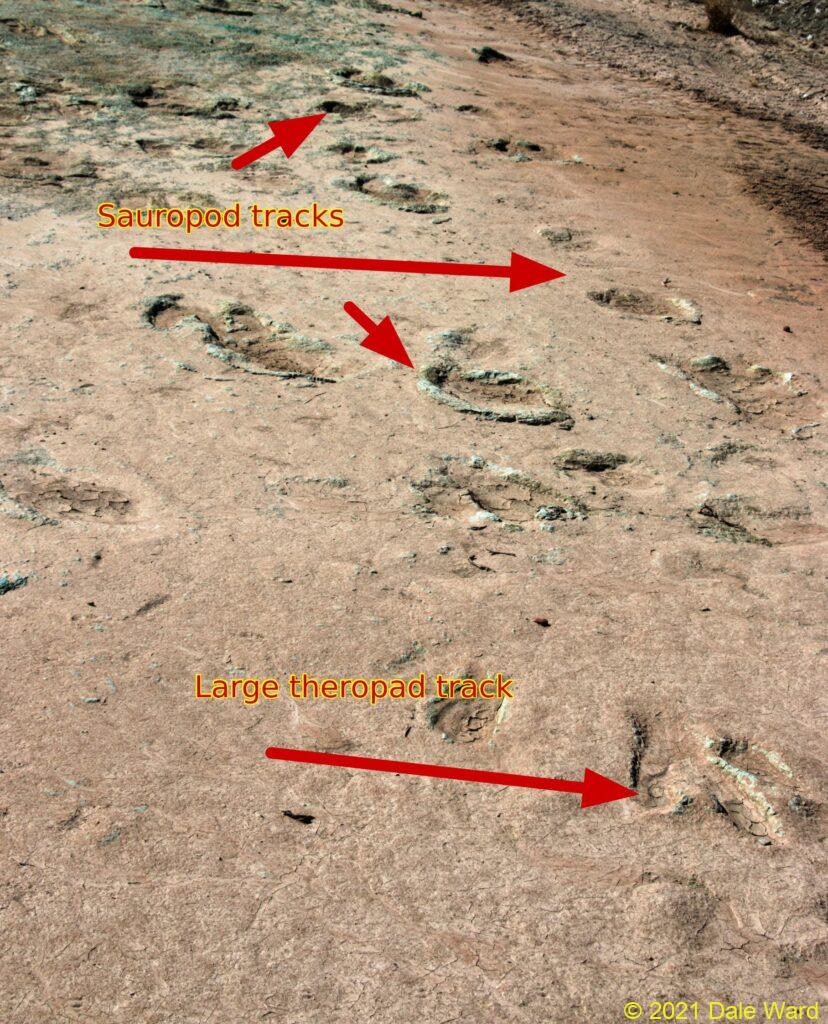 Previous photo with some of the tracks labeled. You can see the actual trackways where _that_ individual dinosaur walked _that_ direction, and turned _that_ way to look at something…
Previous photo with some of the tracks labeled. You can see the actual trackways where _that_ individual dinosaur walked _that_ direction, and turned _that_ way to look at something…
From some of the reading I’ve done (see “Sources”), this site was on the edge of a large, salty lake, surrounded by dry, sandy country. Based on the biota at other large, salty lakes in the present time, Brian Engh speculated that this tracksite was originally located at a freshwater inlet into the lake. It would have been an oasis, essentially. That would explain the large number of creatures that passed through the site in a relatively brief period of time.
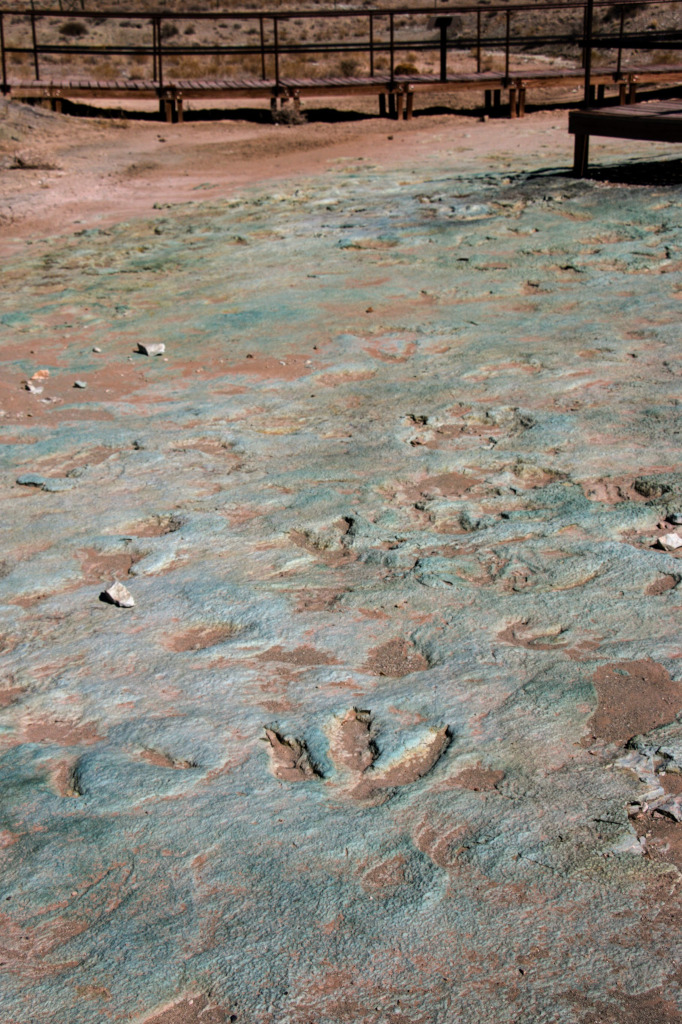 Big theropod tracks walking away through a tangle of other species’ tracks.
Big theropod tracks walking away through a tangle of other species’ tracks.
Another of the highlights at this site is reading the signage that the BLM put up. It’s quite excellent, really helps to explain what you’re seeing.
There are also paintings and diagrams showing which creatures left which tracks, and what the site might have looked like when the tracks were made.
The BLM really raised the bar with the work they did here.
Sources:
A humorous thing - when I first wrote this post, I tried to identify all of the tracks, lard the post with as many facts as I could, etc. When I had finished, I found that what I’d written was not as interesting and well-done as the original source documents, while still being incomplete. Imagine my chagrin! So I took out most of the factoids and just tried to concentrate on what our visit was like.
So…if you want more information about the site, I highly recommend the following links.
dontmesswithdinosaurs.com - Brian Engh is one of the artists that worked on the signage at this site. He also did signage at the Stomping Grounds. Here’s a post where he talks about painting one of the most striking signs at the Mill Canyon Tracksite.
BLM’s Mill Canyon Dinosaur Tracksite PDF - This is a PDF containing images of BLM’s interpretive signage. They did a magnificent job with these signs - its’ well worth reading.
